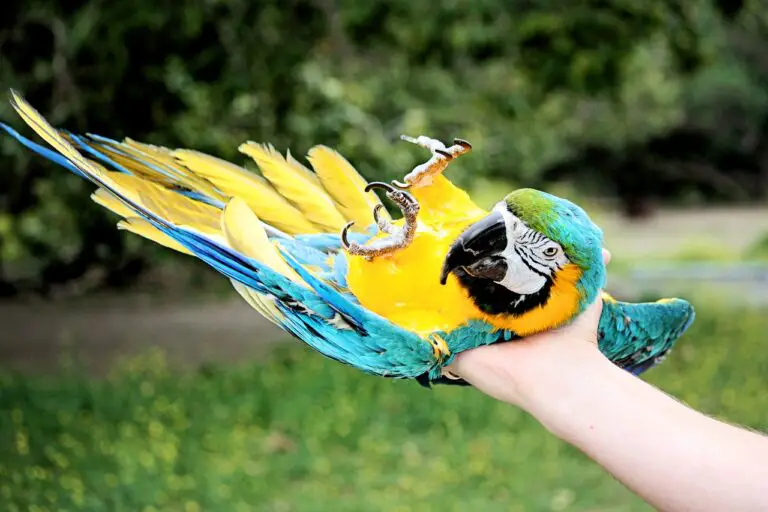Exotic Pet Travel Tips – How to Travel With Your Pet
Traveling can be a fun and exciting experience, but it can also be stressful and overwhelming, especially when you’re bringing an exotic pet along for the ride.
Whether you’re taking a road trip, flying on a plane, or hopping on a train, traveling with an unusual furry friend requires careful planning and preparation.
If you’re planning to travel with your exotic pet, don’t fret! With the right approach and a little bit of know-how, you can make sure your pet is safe, happy, and comfortable throughout your journey.
In this article, we’ll walk you through everything you need to know about traveling with your exotic pet, including how to prepare for the trip, what to pack, and how to keep your pet safe and comfortable during the journey.
Key takeaways:
- Research the laws and regulations in your destination regarding exotic pets before you travel.
- Choose a carrier that is appropriate for your pet’s size and that meets the requirements of your transportation provider.
- Make sure to label the carrier with your contact information and your pet’s name.
- Provide your pet with adequate food, water, and any necessary medications during the journey.
- Make sure to keep your pet comfortable and safe throughout the journey, and avoid leaving them alone for extended periods of time.
By following these key takeaways, you can help ensure a safe and enjoyable travel experience for both you and your exotic pet.
Remember to always plan ahead, check with your transportation provider and destination for any restrictions or regulations, and prioritize the well-being of your pet during the journey.
How to Prepare for Your Trip
Before you hit the road, there are a few things you need to do to prepare for your trip with your exotic pet.
1. Research Your Destination
Before you book your trip, make sure to do your research and find out if your exotic pet is allowed in your destination.
Different countries, states, and cities have different rules and regulations when it comes to exotic pets, so it’s important to know what you’re getting into before you start packing.
You can usually find this information on the website of your destination’s government or tourism department. If you’re not sure, you can also call or email them to ask for more information.
2. Prepare the Travel Documents
Traveling with an exotic pet requires a lot of paperwork and documentation.
Besides the legal permits and certificates required by the destination country and states, you should also carry your pet’s health records, vaccination certificates, and any necessary medications or supplements.
These documents should be kept in a waterproof and easily accessible folder or pouch, preferably attached to the carrier.
Make sure to check the expiration dates of the documents and renew them if necessary.
3. Choose the Right Carrier
Selecting the right carrier for your exotic pet is essential for its safety and comfort during travel.
The carrier should be spacious enough for your pet to move around comfortably, but not too big that it becomes unstable during transit. It should also be sturdy, well-ventilated, and leak-proof, with secure locks to prevent any accidental escapes.
Depending on your pet’s species and temperament, you may opt for a hard-shell carrier or a soft-sided one.
Additionally, make sure to label the carrier with your pet’s name, your contact details, and any necessary labels or warnings.
5. Get Your Pet Checked by a Vet
It’s always a good idea to take your exotic pet to the vet before you travel.
This will ensure that your pet is healthy and up-to-date on all of their vaccinations and medications.
Make sure to bring all of your pet’s medical records with you on the trip, as well as any medications or supplements they need to take.
You may also want to get a health certificate from your vet, which will prove that your pet is healthy and fit to travel.
6. Pack for Your Pet
When it comes to packing for your exotic pet, you’ll need to bring a few essential items to keep them comfortable and happy during the journey.
Some things to pack for your pet include:
- Food and water dishes
- Food and treats
- Bedding and blankets
- Toys and chews
- Leashes, harnesses, and collars
- Crate or carrier
Make sure to pack enough food and supplies to last for the entire trip, as it may be difficult to find the right food and supplies for your exotic pet in unfamiliar places.
7. Get Your Pet Used to Traveling
If your pet isn’t used to traveling, it’s a good idea to get them acclimated before you hit the road.
Start by taking short car rides with your pet to get them used to being in a vehicle. You can gradually increase the length of the rides until your pet is comfortable with longer trips.
If you’re flying with your pet, you can also get them used to the process by taking them to the airport a few times before your trip.
This will help them get used to the sights, sounds, and smells of the airport.
Tips for Traveling with Your Exotic Pet
Now that you’re prepared for your trip, it’s time to hit the road with your exotic pet.
Here are a few tips to keep in mind to make the journey as smooth and stress-free as possible:
1. Check with Your Transportation Provider
Before you travel, make sure to check with your transportation provider to find out their rules and regulations when it comes to exotic pets.
Airlines, trains, and buses may have different rules when it comes to traveling with unusual animals, so it’s important to do your research.
Make sure to book your tickets well in advance and let your transportation provider know that you’ll be traveling with an exotic pet.
They may have certain requirements or restrictions that you’ll need to follow.
2. Check the Laws and Regulations
Before you travel, make sure to research the laws and regulations in your destination regarding exotic pets.
Some countries may have strict restrictions on certain animals, while others may require specific permits or paperwork.
Make sure to contact the embassy or consulate of your destination to find out their specific rules and regulations.
You should also check with your own government to make sure that you’re allowed to travel with your exotic pet.
3. Keep Your Pet Comfortable
During the journey, it’s important to keep your exotic pet as comfortable as possible.
Make sure to bring plenty of water and food, and take breaks as often as needed to allow your pet to stretch their legs and use the bathroom.
If you’re traveling by car, you can also bring a familiar blanket or toy to help your pet feel more at ease.
If you’re flying, make sure to choose a pet-friendly airline and book a direct flight if possible to minimize stress and discomfort for your pet.
4. Be Prepared for Emergencies
No matter how well you prepare, emergencies can still happen.
Make sure to bring a first aid kit for your pet, as well as any necessary medications or supplements.
You should also research the location of the nearest emergency veterinarian in case your pet needs medical attention during the trip.
Make sure to have their contact information and directions handy in case of an emergency.
5. Respect the Local Environment
When traveling with an exotic pet, it is essential to respect the local environment and wildlife.
You should never release your pet into the wild, as it can harm the ecosystem and introduce invasive species. You should also avoid interacting with local wildlife, as it can cause stress, disease transmission, or even legal trouble.
Instead, you can visit pet-friendly attractions or parks, where your pet can enjoy the new environment safely.
Conclusion
Traveling with an exotic pet can be a fun and rewarding experience, but it’s important to take the necessary precautions to ensure the safety and comfort of your pet.
Make sure to prepare well in advance, check with your transportation provider and destination for any restrictions or regulations, and keep your pet comfortable and safe during the journey.
By following these tips and being well-prepared, you and your exotic pet can have a stress-free and enjoyable trip together.
So pack your bags, grab your pet, and get ready for an adventure!
FAQs
Can I travel with my exotic pet internationally?
It depends on the legal requirements of the destination country and the species of your pet.
Some countries may prohibit the entry of certain exotic pets, while others may require specific permits or quarantine periods.
Can I travel with my exotic pet on a plane?
Whether or not you can travel with your exotic pet on a plane will depend on several factors.
Different airlines and destinations may have different rules and regulations regarding the transportation of exotic pets.
Before booking your flight, make sure to research the airline’s policy on traveling with exotic pets.
Some airlines may allow certain types of exotic pets on board, while others may only allow them to be transported in the cargo hold.
What should I do if my pet gets sick during the trip?
If your pet gets sick during the trip, seek medical attention as soon as possible.
Research the location of the nearest emergency veterinarian and have their contact information and directions handy in case of an emergency.
What kind of carrier should I use for my exotic pet?
The carrier you use for your exotic pet will depend on the size and type of animal.
Make sure to choose a carrier that is appropriate for your pet’s size and that meets the requirements of your transportation provider.
For air travel, make sure to choose a carrier that is approved by the airline and that provides adequate ventilation and space for your pet.
You should also label the carrier with your contact information and your pet’s name.
How do I acclimate my pet to the carrier before the trip?
You can gradually introduce the carrier to your pet by placing their favorite toys or treats inside, letting them explore and play inside, and gradually increasing the duration of their stay inside.
How do I find a qualified exotic pet vet in my destination?
You can research online, ask for recommendations from local pet groups or forums, or contact the local veterinary association or board for referrals.
Can I let my exotic pet roam freely during the trip?
No, you should always keep your pet in the carrier or on a leash during the trip to prevent any accidents, escapes, or interactions with local wildlife.
Peter Stones is the founder of Exotic Pets Place, the leading online resource for exotic pet care information.
With over 10 years of hands-on exotic pet ownership experience, he is deeply passionate about sharing his expertise to help others properly care for their unusual pets.
When he's not writing extensively researched articles or connecting with fellow exotic pet enthusiasts worldwide, you can find Peter at home tending to his own beloved menagerie of exotic animals.



![Exotic Pet Breeding Ethics A Comprehensive Guide [+ FAQs], two goats in a field](https://exoticpetsplace.com/wp-content/uploads/2023/06/Exotic-Pet-Breeding-Ethics-A-Comprehensive-Guide-FAQs-two-goats-in-a-field-768x740.jpg)


![Exotic Pet Friendly Cities The [Top 10] Worldwide Destinations, Sydney Opera House](https://exoticpetsplace.com/wp-content/uploads/2023/05/Exotic-Pet-Friendly-Cities-The-Top-10-Worldwide-Destinations-Sydney-Opera-House-768x512.jpg)
